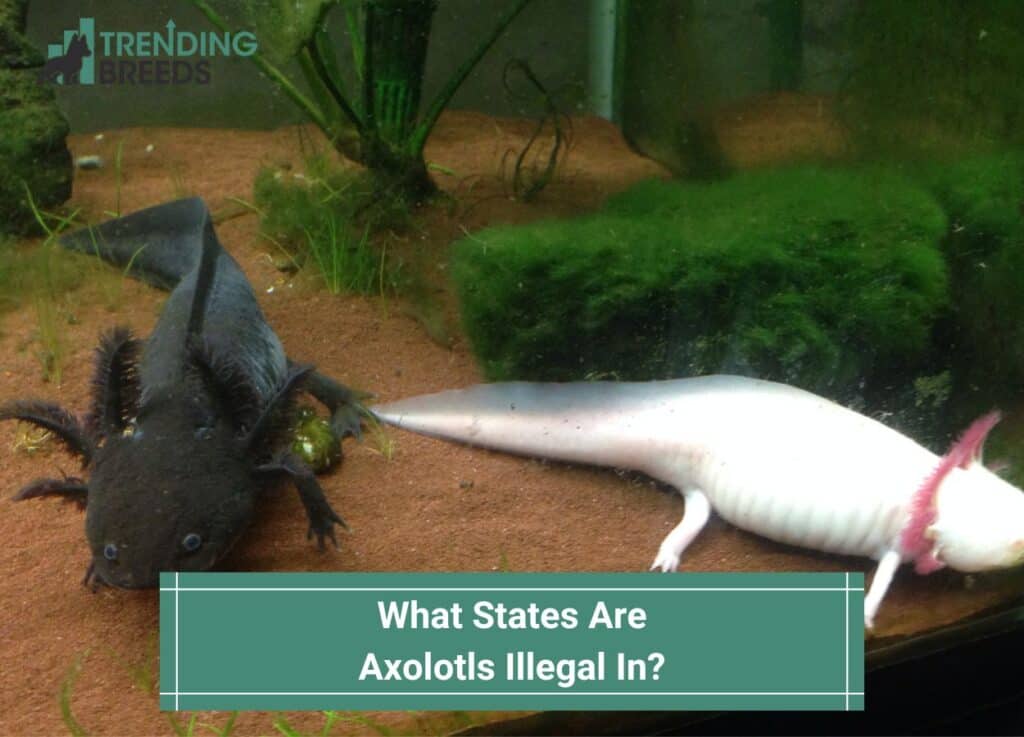
Many people have observed that Axolotls are not allowed as pets in some areas of the United States, Canadian provinces, and other parts of the world. So, what states are Axolotls illegal in?
In the United States, the ownership of Axolotls is considered illegal in California, Maine, New Jersey, and D.C., although obtaining a permit is necessary in New Mexico and Hawaii.
In Canada, owning Axolotls is prohibited in New Brunswick, British Columbia, and Prince Edward Island but is allowed with a permit in Nova Scotia.
In Manitoba, Axolotls are deemed illegal, specifically in Winnipeg, while being legal in the rest of the province.
Although it can be disheartening for individuals residing in these restricted areas, it is essential to acknowledge that these regulations exist for legitimate reasons.
Read on to learn more.
Before you scroll further down this guide, check out these other animal-related articles: Axolotl Shedding: What To Do And Why and What Is a Cow-Hocked Cat?.
Table of Contents
Why Are They Banned?
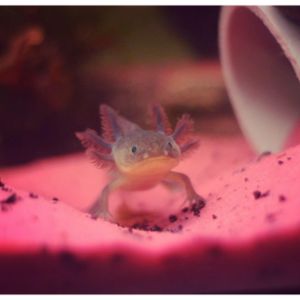
It is a common misconception to assume that these bans are primarily motivated by the critical endangerment of wild Axolotl populations.
However, this assumption is not accurate. Although wild Axolotl populations are indeed experiencing a significant decline and are at risk of extinction soon, the Axolotls kept as pets are bred in captivity and have been for numerous generations.
They are the descendants of various small colonies that are present in several different countries.
Therefore, the bans on owning Axolotls are not primarily for protecting wild populations but for other factors or concerns.
Pet Axolotls have undergone significant genetic and behavioral changes due to decades of captive breeding.
Through the breeding process, they have crossbred with tiger salamanders, genetically modified (such as the introduction of the GFP gene), and subjected to numerous generations of breeding without the influence of natural selective pressures.
Consequently, pet Axolotls have become distinct from their wild counterparts to the extent that they can be considered almost like a different species altogether.
These genetic and behavioral differences play a crucial role in understanding why releasing pet axolotls into Lake Xochimilco, their native habitat, would not serve as a viable solution to prevent the extinction of wild axolotls.
The altered traits and adaptations of captive Axolotls render them ill-suited to survive and thrive in the natural environment.
Reintroducing genetically modified or selectively bred axolotls into the wild could disrupt the delicate ecological balance of Lake Xochimilco and potentially cause more harm than good for the remaining wild populations.
Therefore, it is crucial to recognize that the conservation efforts for wild Axolotls must focus on preserving their natural habitat and implementing measures to address the specific threats they face rather than relying on the release of pet Axolotls bred in captivity.
The prohibition on owning Axolotls imposed by various governments is primarily for the significant environmental threat they pose during their release into the wild.
This concern is particularly evident in regions like California, where the potential consequences of Axolotl release could result in severe environmental damage.
Axolotls have the inherent capacity to outcompete native salamander species already facing challenges, such as the California tiger salamander (Ambystoma Californians) and the Eastern tiger salamander (Ambystoma tigrinum).
If Axolotls enter the natural habitat, their competitive advantage and distinct genetic and behavioral characteristics resulting from captive breeding could disrupt the ecological balance.
They might outcompete and displace native salamander species, leading to a decline in their populations or even their extinction.
Such ecological imbalance could have cascading effects on the entire ecosystem, including impacts on other flora and fauna that depend on the native salamanders for food or habitat.
Thus, the restrictions on owning Axolotls are a precautionary measure to safeguard fragile ecosystems and protect native species from potential harm caused by introducing non-native and highly adaptable Axolotls into the wild.
Where Are They Legal & Illegal to Own?
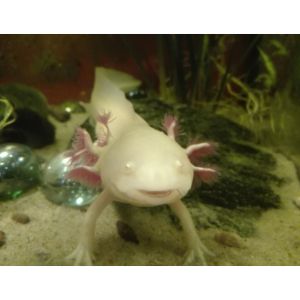
Illegal
In three states and the District of Columbia, the ownership of Axolotls is against the law.
California and Maine have banned Axolotls due to their classification as “detrimental animals” that pose a threat to native salamander species within those states.
Similarly, the ban on Axolotls in New Jersey aims to prevent potential breeding with the native Tiger Salamander, which could have negative ecological impacts.
Legal
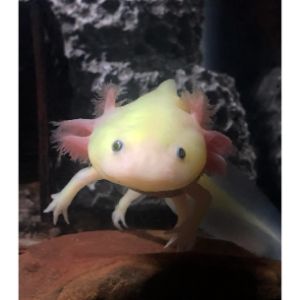
Hawaii and New Mexico have established a system where owning Axolotls as pets are allowed, but it requires obtaining the appropriate permits.
In all other states, you can have Axolotls as pets without permits.
It is important to note that individual cities and counties may have specific regulations regarding the ownership of Axolotls, which may impose additional restrictions or requirements.
Therefore, knowing local rules regarding Axolotl ownership in particular areas is essential.
Invasive Pets

The state of Florida serves as an example of the environmental impact resulting from such releases, leading to the passing of a new law to prohibit the ownership of certain reptile species.
The ban targeted commonly kept pet reptiles, including tegus, green iguanas, and various species of pythons.
In Florida, releasing these reptiles into the wild has had significant consequences.
Released pets have been able to establish populations and outcompete local animals, creating imbalances within the ecosystems.
This invasion by non-native species has been so detrimental that it has posed a threat to the survival of native species, some of which now face the risk of extinction.
These instances highlight the importance of responsible pet ownership and the potential consequences of releasing pets into the wild.
Regulations and bans mitigate the risks of introducing non-native species into delicate ecosystems, safeguarding local flora and fauna from the ecological disruptions caused by invasive species.
Invasive Plants and Hitchhikers
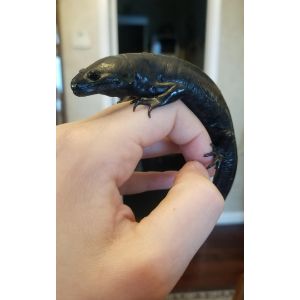
It is not only the release of animals but also the improper disposal of plants that can significantly impact local ecosystems.
The recent headlines highlighting the need for proper disposal of aquatic plants, particularly marimo balls, serve as a reminder of the potential risks involved.
Pet owners and hobbyists need to be responsible for managing aquatic plants to mitigate these risks.
Proper disposal methods can help prevent the accidental introduction of invasive species and potential harm to local ecosystems, such as composting or placing plants in sealed bags for landfill disposal.
Furthermore, raising awareness about the possible consequences of improper disposal and promoting responsible practices within the aquatic hobbyist community is vital in minimizing the impacts of invasive species introduction.
When disposing of aquatic plants, it is crucial to avoid flushing them down the toilet or discarding them in or around waterways.
Flushing plants down the toilet can introduce them to wastewater systems and potentially reach natural water bodies, where they can establish and spread as invasive species.
Similarly, disposing of them near waterways may inadvertently lead to their introduction into local ecosystems.
By following these guidelines and promoting responsible practices within the aquatic hobbyist community, we can help minimize the potential impacts of invasive species and protect our ecosystems from harm.
FAQs About Axolotl’s Legal Status
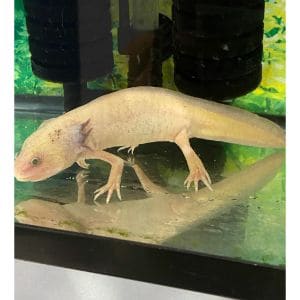
Can I have an Axolotl as a pet?
Yes, you can have an Axolotl as a pet in many locations.
However, it is essential to note that regulations regarding the ownership of Axolotls vary depending on your site.
In some states or countries, Axolotls may be illegal to own as pets; in others, you may need to obtain a permit or follow specific guidelines.
It is best to check the local laws and regulations regarding Axolotl ownership in your area before acquiring one as a pet.
Additionally, ensure that you have the proper knowledge and resources to provide for the specific needs of axolotls, such as appropriate tank setup, water conditions, and a suitable diet.
Are Axolotls legal in Florida?
Axolotls are legal to own as pets in Florida. However, it’s important to note that regulations can change over time.
So, it’s always a good idea to check with local authorities or consult the most up-to-date information regarding the legality of owning Axolotls in Florida.
Additionally, while axolotls may be legal statewide, specific city or county regulations could apply, so it’s advisable to also check for any local restrictions or permits that may be required.
In what U.S. states are Axolotls legal?
Axolotls are generally legal to own as pets in most U.S. states.
However, it’s important to note that regulations regarding the ownership of Axolotls can vary from state to state, and certain areas may have specific restrictions or permit requirements.
Before acquiring one as a pet, you should check the laws and regulations regarding Axolotl ownership in your state and local jurisdictions.
Some states that have specific rules or restrictions on owning Axolotls include California, Maine, New Jersey, and the District of Columbia, where ownership may be prohibited, or permits may be required.
Am I allowed to touch my Axolotl?
Yes, you can touch your Axolotl, but it is essential to handle them carefully and ensure that you provide a suitable environment for their well-being.
Axolotls have delicate skin sensitive to rough handling, so it’s best to minimize handling and only touch them when necessary, such as during tank maintenance or health checks.
When touching your Axolotl, ensure your hands are clean and free of any chemicals, lotions, or soaps that could harm them.
Gently scoop them up from below using wet hands to avoid damaging their skin or limbs. Avoid excessive squeezing or gripping, as this can cause stress or injury.
Remember that Axolotls are primarily aquatic animals and are most comfortable in the water.
It is generally best to observe and interact with them within their tank rather than frequently removing them from their aquatic environment.
Providing them with appropriate hiding spots and a well-maintained tank will help create a stress-free environment for your axolotl to thrive.
Are Axolotls good pets?
Axolotls can make fascinating and unique pets for the right individuals willing to meet their specific needs.
Here are some factors to consider when determining if Axolotls are good pets for you:
Low maintenance
Axolotls are generally low-maintenance pets compared to other animals.
They have simple dietary requirements, don’t require daily walks or exercise, and usually stay in their aquatic environment.
Long lifespan
Axolotls have a relatively long lifespan, typically living for 10 to 15 years with proper care. This long-term commitment is for when deciding to keep them as pets.
Unique appearance
Axolotls have a distinct and striking appearance with their external gills, feathery external gill stalks, and fringed dorsal fins.
Many people find them visually appealing and enjoy observing their unique behaviors.
Aquatic habitat
Axolotls are fully marine creatures and require an appropriate setup, including a spacious tank with cool, clean water and suitable filtration.
Maintaining water quality and temperature within the recommended range is essential for their health.
Limited interaction
Unlike other pets, Axolotls are not particularly interactive or social animals.
They are primarily visual creatures and may not seek or enjoy direct physical interaction with humans.
Observing their behaviors and interactions with their environment can still be enjoyable.
Still, it’s essential to understand that they are not cuddly or playful in the same way as mammals or some reptiles.
Specialized care
Axolotls have specific care requirements, including a proper diet of live or frozen foods, water temperature control, and regular tank maintenance.
Knowing their needs and providing the appropriate environment is crucial for their well-being.
Ultimately, the suitability of Axolotls as pets depends on your level of commitment, interest in their unique characteristics, and willingness to provide the necessary care and attention.
It’s essential to thoroughly research their care requirements and consider if they align with your lifestyle and preferences before bringing an Axolotl into your home.
What States Are Axolotls Illegal In?

Axolotls can be captivating and intriguing pets for those willing to meet their specific needs.
Their unique appearance, low-maintenance requirements, and long lifespan make them a distinct choice for aquatic enthusiasts.
However, it’s essential to consider their specialized care requirements, limited interaction, and the commitment required for their long-term well-being.
Axolotls thrive in a well-maintained aquatic habitat with appropriate water conditions and a suitable diet.
Providing them with the right environment and ensuring their physical well-being should be a top priority for responsible pet owners.
While they may not offer the same level of interaction as some other pets, observing their behaviors and unique features can be rewarding.
Before deciding to own an axolotl, it’s crucial to research their care requirements thoroughly and assess if they align with your lifestyle and abilities as a pet owner.
Understanding the commitment and responsibilities of providing a suitable home for these fascinating creatures is essential for a positive and enriching pet ownership experience.
By being knowledgeable, responsible, and attentive to their specific needs, axolotls can bring joy and a sense of wonder to those who appreciate their beauty and uniqueness.
If you find this guide, “What States Are Axolotls Illegal In,” informative and helpful, you can check out these other animal-related articles from our team:
You can learn more about axolotls by watching “The Insane Biology of: The Axolotl” down below:




